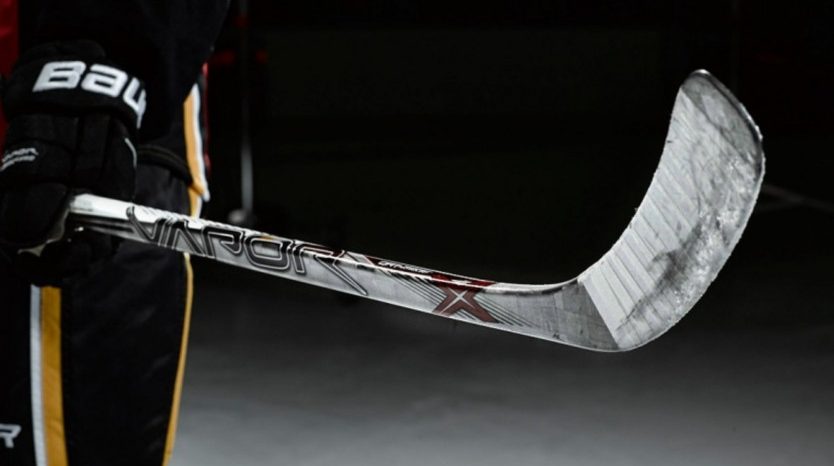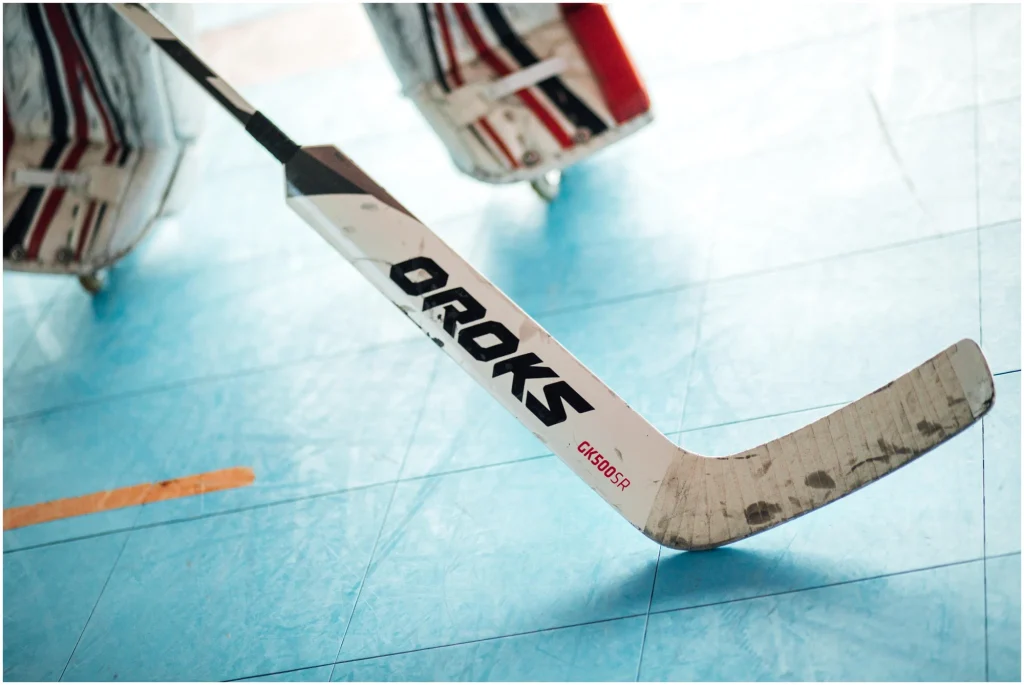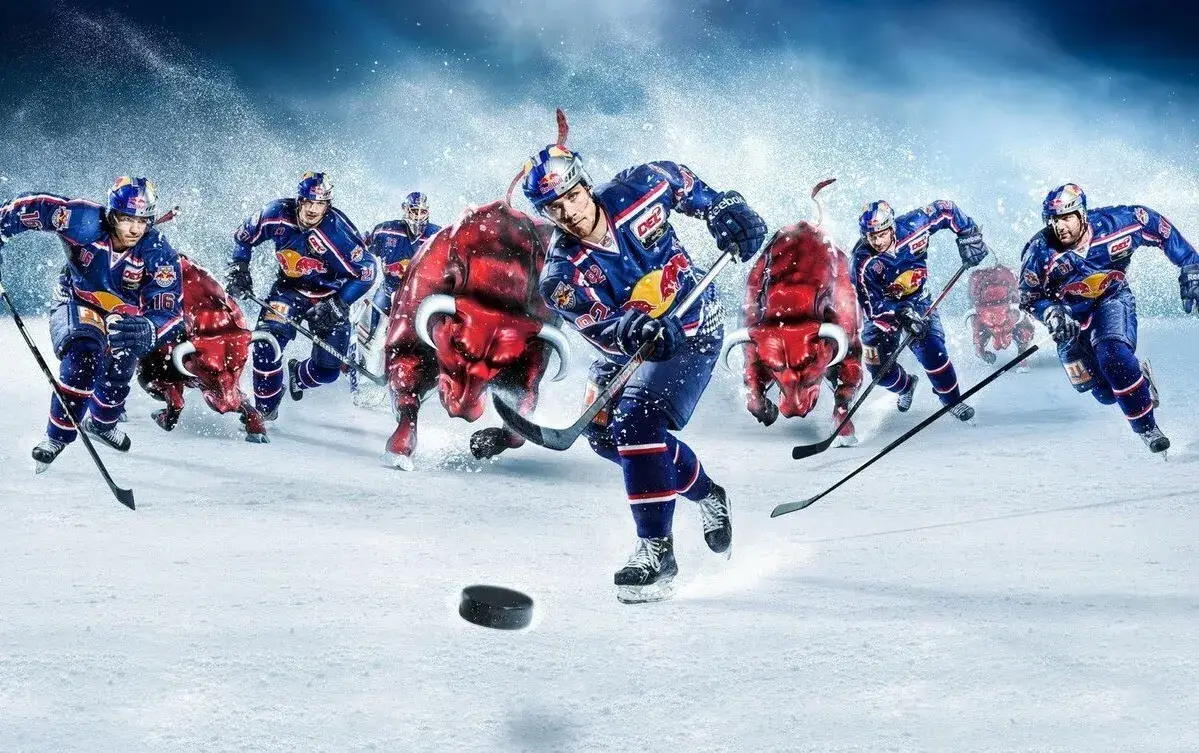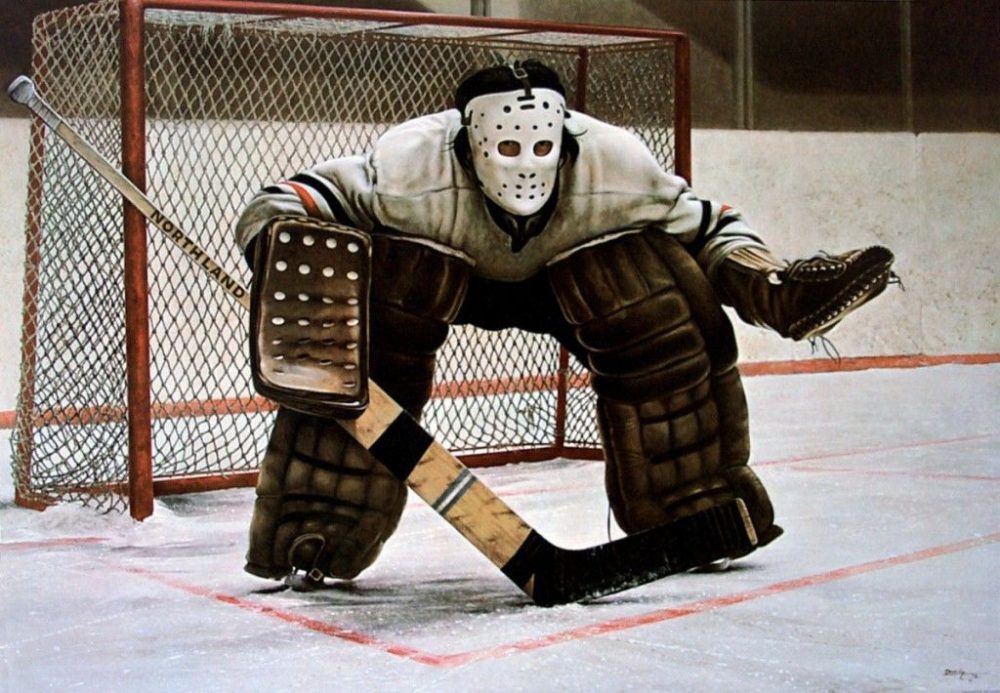A hockey stick is an extension of a hockey player’s hand, their main tool on the ice directly affecting shot accuracy, puck control, and game efficiency. Choosing the right equipment can be the key to success, while an unsuitable model can hinder a player from fully unleashing their potential. With such a huge variety of shapes, curves, stiffness levels, and materials on the modern market, making a choice can be challenging. In this article, we will explain how to choose a hockey stick correctly.
Precise Proportions — the Basis of Control
The optimal stick length is determined by a strict formula. When standing without skates, the stick should reach the tip of the nose, and when in gear, it should reach chin level. A shortened blade increases maneuverability and suits forwards preferring low dribbling and close-range play near the net. An extended shaft enhances shot power, allows for defense at a distance, and suits defensemen and larger players.

Parameters:
- Height 160–170 cm — stick up to 145 cm.
- Height 170–180 cm — stick 150–155 cm.
- Height 180–190 cm — 160–165 cm.
- Above 190 cm — up to 170 cm.
How to Choose a Hockey Stick Based on Shaft Flexibility
 Flex — shaft stiffness expressed in numbers. The higher the number, the stiffer the stick. The average value for adults is 85. Lightweight and technical players use flex 65–75 for soft wrist shots. Power forwards focusing on powerful shots use 100–110. Professionals choose flex based on weight and hand strength: the stick should flex slightly under a load of 18–20 kg.
Flex — shaft stiffness expressed in numbers. The higher the number, the stiffer the stick. The average value for adults is 85. Lightweight and technical players use flex 65–75 for soft wrist shots. Power forwards focusing on powerful shots use 100–110. Professionals choose flex based on weight and hand strength: the stick should flex slightly under a load of 18–20 kg.
Recommendation on how to choose a hockey stick correctly: for a weight of 70 kg — flex 75–80. For 90 kg — 95–100. A shortened shaft requires increasing flex by 5–10 units to maintain accuracy.
Materials: From Classics to Technologies
The question of how to choose a hockey stick often comes down to the material. Wood is an economical but outdated option. Ideal for beginners. Composite sticks are the standard in the KHL and NHL. Weighing around 400 grams, they provide perfect response, energy transfer, and allow for sharp shots. Modern sticks incorporate carbon fibers, Kevlar, and fiberglass, increasing durability and reducing weight.
Models like Bauer Vapor HyperLite or CCM Ribcor Trigger 8 Pro demonstrate the best performance in terms of lightness, balance, and response speed. Price starts from 25,000 rubles for an original stick. Alternatives include Warrior Alpha LX or Sher-Wood Rekker.
Blade Shape and Curve Angle: Puck Control and Technique
The blade affects puck control, pass accuracy, and dribbling characteristics. Curve angles range from 3 to 6. A small angle is for versatile play. A large angle is for wrist shots. A curved blade with a large angle suits attacking players who frequently shoot on goal. A straight blade is for defensemen delivering precise long-distance passes.
Shapes:
- P28 (McDavid) — aggressive curve, suitable for sharp wrist shots.
- P92 (Crosby) — versatile, suitable for dribbling and passing.
- PM9 (Staal) — straight blade for puck control.
How to Choose a Hockey Stick Based on Grip Type
The choice between a left and right grip depends not on the dominant hand but on motor skills. Right-handed players often use a left grip: the right hand controls the lower part of the stick. Players with developed control prefer a grip where the leading hand is on the shaft. KHL statistics show that 64% of hockey players use a left grip, especially among defensemen.
Grip (anti-slip coating) provides better fixation, especially in rainy and humid rink conditions. Without it, accidental slips and mistakes in shots are possible.
Weight and Balance: Lighter Means Faster
How to choose a hockey stick correctly: professional athletes prefer equipment weighing no more than 420 g. Models for children weigh 300–350 g. For teenagers, up to 400 g. When choosing, it is important to consider the balance point — shifting closer to the blade increases shot power, while towards the upper part eases control.
Models like Bauer Supreme Mach and CCM Jetspeed FT6 offer a balanced center of gravity and adaptive shaft geometry, allowing for interception and shot release in as little as 0.3 seconds.
Playing Style: No Universal Solution
The decision on how to choose a hockey stick should take into account the position:
- Forwards — short shaft, high curve angle, light weight.
- Defensemen — long shaft, medium stiffness, straight blade.
- Centers — versatile models with soft flexibility and medium length.
- Goalies — special sticks with a wide blade and stiff shaft for deflecting shots and quick passing.
Signs of an ideal stick:
- Weight — up to 420 g.
- Flex — depending on the player’s weight (see table above).
- Grip — preferable for high control.
- Curve — according to the position.
- Material — composite with reinforcement.
- Balance — shifted to the center.
- Length — based on height in full gear.
- Brand — Bauer, CCM, Warrior — tried and tested on the ice.
- Strength check — slight flex without creaking under a load of 15–20 kg.
How to Choose a Hockey Stick Correctly Based on Height, Weight, and Strength Parameters
The effectiveness of the game process directly depends on the stick’s compliance with the player’s physiological characteristics. If the stick’s length, stiffness, or weight do not match the age norms, the player’s shot technique, puck control, and, critically, joint safety can suffer. Categorization into Junior, Intermediate, and Senior takes into account not only age but also anthropometry, requiring an individual approach to selection.
Junior Category — Technique Control and Injury Minimization
Players up to 14 years old (typically up to 155 cm tall and weighing up to 45 kg) use Junior series sticks. The average length of such models ranges from 120 to 140 cm depending on the blade curve and palm fit. Stiffness is around 40–50 flex, allowing young players to control the puck and practice shots without overloading.
Simplified shaft geometry reduces wrist strain, and the lightweight composite base requires less force for a swing. Properly chosen Junior sticks help develop coordination, avoiding typical forearm and shoulder overloads that occur with excessive flex or excessive length.
Intermediate Category — Transitional Age Balance
In the age group of 14–17 years (height from 155 to 175 cm, weight from 50 to 70 kg), more complex technical elements come into play. It is important to use Intermediate category sticks up to 150 cm in length and stiffness from 55 to 70 flex.
At this stage, players move beyond basic techniques, mastering power shots, touch passes, and transitioning from dribbling. Using equipment with inappropriate stiffness slows reaction time, reduces shot efficiency, and leads to increased wear on elbow joints and wrists, especially for those experiencing rapid growth.
Professionals recommend how to choose a hockey stick correctly: review parameters every 6–8 months, especially in case of growth spurts or muscle mass increase. Players at this level already require consultation with a coach or club service engineer to accurately determine the moment for stick replacement or trimming.
Senior Category — Working Tool for Adults
Players over 18 years old, taller than 175 cm, and weighing over 70 kg use Senior sticks. The length of such models reaches 160–170 cm, stiffness ranges from 75 to 110 flex and above. Adult equipment requires a clear assessment of the body mass and wrist strength ratio: incorrect stiffness reduces shot accuracy, increases swing time, allowing the goalie to react.

For a power-forward player, sticks with a stiffness of 85–95 flex are suitable, while a mobile defenseman regularly shooting from the blue line will choose a stiffness of 100 and above. KHL and NHL professional clubs often personalize each stick for a specific player, including the curve shape, handle thickness, and even the flex point (low, mid, or high kick).
Conclusion
 A player dedicating hours to training should have equipment that fully matches their technique, weight, playing style, and ambitions. There are no universal models — only a targeted selection yields results. The right stick enhances strengths, compensates for weaknesses, and instills confidence in every touch.
A player dedicating hours to training should have equipment that fully matches their technique, weight, playing style, and ambitions. There are no universal models — only a targeted selection yields results. The right stick enhances strengths, compensates for weaknesses, and instills confidence in every touch.
 en
en  ru
ru  de
de  ar
ar  es
es  hi
hi  fr
fr  nl
nl  it
it  pt
pt  el
el 



